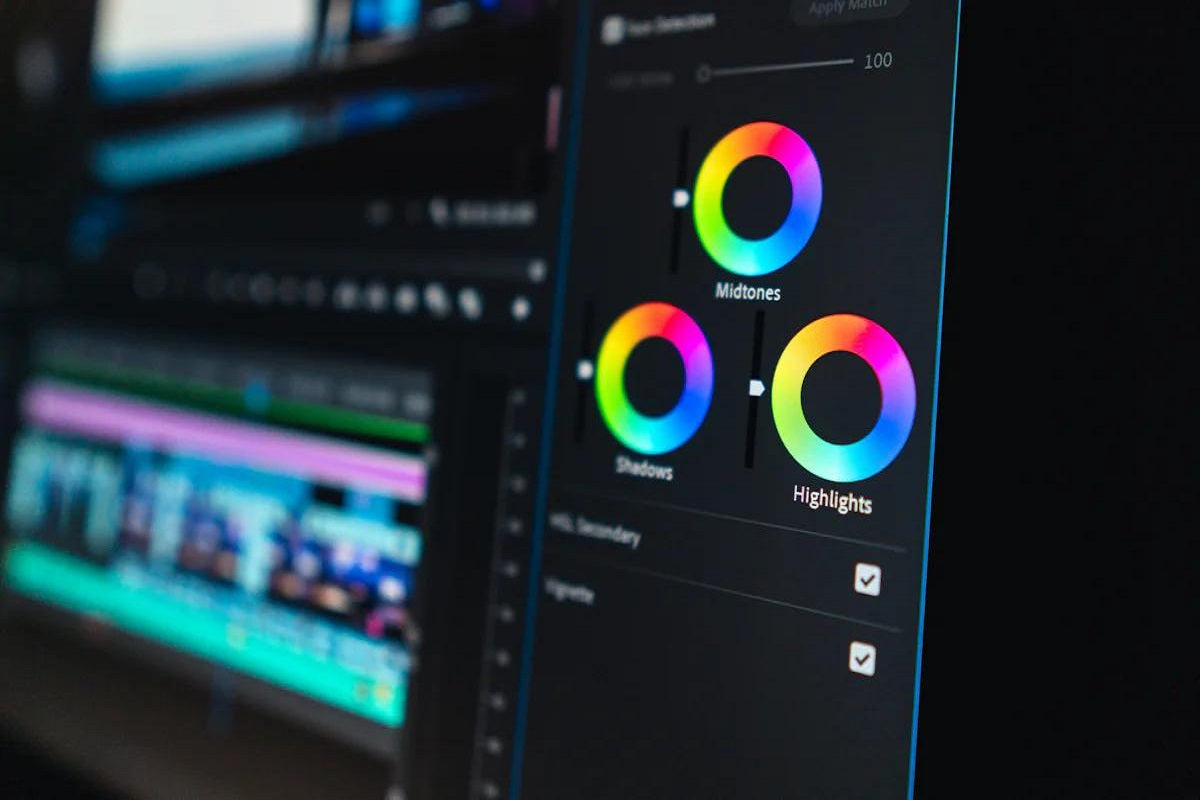Introduction
Temperature blankets offer a creative way to track daily weather changes. You use different yarn colors to represent each day's temperature, creating a vibrant tapestry of the year's climate. This craft has gained popularity for its artistic and informative nature. Choosing the right temperature blanket color chart is crucial. It ensures your blanket accurately reflects temperature variations and maintains aesthetic appeal. With the right chart, you can create a masterpiece that beautifully captures the essence of the year.
Ⅰ Criteria for Comparing Temperature Blanket Color Charts
When selecting a temperature blanket color chart, you must consider several key criteria to ensure your project is both visually appealing and easy to execute. Here, we delve into the essential aspects that can guide your choice.
1.1 Color Range
Importance of a wide color range
A broad color range in a temperature blanket color chart allows you to capture the subtle nuances of daily temperature changes. This diversity in colors can transform your blanket into a vivid representation of the year's climate. A wide palette ensures that each temperature variation is distinct, providing a more accurate and detailed visual record.
How color range affects the final product
The color range directly impacts the final appearance of your blanket. A limited range might result in a less dynamic and engaging design, while a comprehensive selection can enhance the overall aesthetic. By choosing a chart with a rich spectrum, you ensure that your blanket not only tells a story but also serves as a striking piece of art.
1.2 Ease of Use
User-friendliness of the chart
User-friendliness is crucial when working with a temperature blanket color chart. A well-organized chart simplifies the process, allowing you to focus on crafting rather than deciphering complex instructions. Look for charts that clearly outline the temperature-to-color assignments, making it easier to follow along as you work.
Accessibility for beginners
For beginners, accessibility is key. A straightforward chart can make the difference between a rewarding experience and a frustrating one. Opt for charts that provide clear guidance and support, ensuring that even those new to the craft can create a beautiful and accurate temperature blanket.
1.3 Aesthetic Appeal
Visual harmony of colors
The visual harmony of colors in your temperature blanket is essential for creating an appealing final product. A well-designed color chart will offer a palette that flows seamlessly from one hue to the next, enhancing the overall look of your blanket. This harmony not only makes the blanket more attractive but also more enjoyable to create.
Impact on the overall look of the blanket
The chosen color scheme significantly influences the blanket's overall appearance. A thoughtfully selected palette can elevate your project, turning it into a centerpiece of your home decor. Consider how the colors will interact and complement each other, ensuring that your blanket is both a personal and artistic expression.
Ⅱ Top Temperature Blanket Color Chart 1

2.1 Features
Unique aspects of the chart
The first temperature blanket color chart stands out due to its comprehensive design. It utilizes WeCrochet’s Brava Worsted Weight Yarn, known for its durability and vibrant hues. This chart offers a unique approach by assigning each 10-degree temperature range a distinct color. If you reside in a temperate climate, you can narrow this to a 5-degree range for more precision. This flexibility allows you to tailor the chart to your specific needs, ensuring that your blanket accurately reflects the local climate.
Color range specifics
This temperature blanket color chart includes a wide array of shades, covering every color spectrum. The diversity in colors ensures that each temperature variation is represented distinctly. You can easily reference the chart by taping a yarn scrap to a paper with the corresponding temperature ranges. This method simplifies the process, making it easier to select the right color for each day’s temperature.
2.2 Advantages
Benefits of using this chart
Using this temperature blanket color chart provides several benefits. First, it enhances the visual appeal of your blanket by offering a rich palette that captures subtle temperature changes. Second, the chart's structure simplifies the crafting process, allowing you to focus on creativity rather than logistics. Finally, the use of high-quality yarn ensures that your blanket remains vibrant and durable over time.
Positive feedback from users
Users have praised this temperature blanket color chart for its ease of use and aesthetic results. Many appreciate the ability to customize the temperature ranges, which adds a personal touch to their projects. The vibrant colors and organized layout receive consistent positive feedback, making it a favorite among both beginners and experienced crafters.
2.3 Potential Drawbacks
Limitations or challenges
Despite its advantages, this temperature blanket color chart may present some challenges. The extensive color range, while beneficial, can be overwhelming for those new to the craft. Additionally, the need to adjust temperature ranges for different climates might require extra planning and organization.
User criticisms
Some users have noted that the chart could benefit from clearer instructions for beginners. While the chart is generally user-friendly, additional guidance on selecting and organizing colors could enhance the experience for those unfamiliar with temperature blankets. Addressing these concerns could make the chart even more accessible to a wider audience.
Ⅲ Top Temperature Blanket Color Chart 2

1.1 Features
Unique aspects of the chart
The second temperature blanket color chart distinguishes itself with its innovative approach to color selection. This chart offers a curated palette that includes shades from every color spectrum, ensuring a comprehensive representation of temperature variations. Unlike other charts, it allows you to choose from a selection of 7 different color charts, each tailored to different climates and personal preferences. This flexibility empowers you to create a blanket that not only reflects the local weather but also aligns with your aesthetic vision.
Color range specifics
This temperature blanket color chart provides a balanced color range, typically featuring around 10 colors. Each color corresponds to a specific 10-degree temperature range, making it easy to track daily changes. The chart's design ensures that each hue transitions smoothly into the next, creating a harmonious visual flow. This thoughtful arrangement enhances the overall look of your blanket, transforming it into a cohesive and visually appealing piece.
1.2 Advantages
Benefits of using this chart
Using this temperature blanket color chart offers several advantages. First, the chart's structured approach simplifies the crafting process, allowing you to focus on creativity. The diverse color palette captures subtle temperature shifts, adding depth and interest to your blanket. Additionally, the chart's flexibility in color selection means you can tailor it to suit your specific climate and personal style, resulting in a truly customized creation.
Positive feedback from users
Users consistently praise this temperature blanket color chart for its ease of use and aesthetic appeal. Many appreciate the ability to select from multiple color palettes, which adds a personal touch to their projects. The chart's clear organization and intuitive design receive positive feedback, making it a popular choice among both novice and experienced crafters. Users often highlight the chart's ability to produce visually stunning blankets that serve as both artistic expressions and functional items.
1.3 Potential Drawbacks
Limitations or challenges
Despite its many benefits, this temperature blanket color chart may present some challenges. The wide array of color options, while advantageous, can be overwhelming for beginners. Selecting the right palette requires careful consideration and planning, which might pose a challenge for those new to the craft. Additionally, the need to adjust the chart for different climates may require extra effort and organization.
User criticisms
Some users have noted that the chart could benefit from more detailed instructions, particularly for those unfamiliar with temperature blankets. While the chart is generally user-friendly, additional guidance on selecting and organizing colors could enhance the experience for beginners. Addressing these concerns could make the chart even more accessible and enjoyable for a broader audience.
Ⅳ Top Temperature Blanket Color Chart 3
Features
Unique aspects of the chart
The third temperature blanket color chart distinguishes itself with its innovative design and adaptability. You will find this chart particularly appealing if you enjoy experimenting with colors. It offers a dynamic approach by allowing you to customize the color assignments based on your personal preferences or specific climate conditions. This flexibility ensures that your temperature blanket becomes a unique reflection of your environment and style. The chart also integrates a digital tool that helps you visualize the color transitions, making it easier to plan your project.
Color range specifics
This temperature blanket color chart provides an extensive color range, featuring over 15 distinct shades. Each shade corresponds to a specific temperature range, typically in 5-degree increments. This detailed segmentation allows you to capture even the slightest temperature fluctuations, resulting in a more intricate and colorful blanket. The chart's layout is intuitive, with colors arranged in a gradient that mirrors natural temperature shifts. This thoughtful arrangement simplifies the selection process, ensuring that your blanket maintains a cohesive and harmonious appearance.
Advantages
Benefits of using this chart
Using this temperature blanket color chart offers several benefits. First, the extensive color range enhances the visual complexity of your blanket, making it a standout piece. Second, the chart's adaptability allows you to tailor it to your specific needs, whether you're documenting a year in a tropical climate or a temperate one. Additionally, the digital tool included with the chart aids in planning and visualization, streamlining the crafting process. This feature is particularly beneficial for those who prefer a more structured approach to their projects.
Positive feedback from users
Users consistently praise this temperature blanket color chart for its versatility and user-friendly design. Many appreciate the ability to customize the color assignments, which adds a personal touch to their creations. The digital tool receives positive feedback for its ease of use and effectiveness in helping crafters visualize their projects. Users often highlight the chart's ability to produce visually stunning blankets that serve as both artistic expressions and functional items. This chart has become a favorite among both novice and experienced crafters for its comprehensive approach and aesthetic results.
Potential Drawbacks
Limitations or challenges
Despite its many advantages, this temperature blanket color chart may present some challenges. The extensive color range, while beneficial, can be daunting for beginners. Selecting the right shades requires careful consideration and planning, which might pose a challenge for those new to the craft. Additionally, the digital tool, although helpful, may require a learning curve for those unfamiliar with technology. Ensuring that the tool is compatible with your devices is essential for a smooth crafting experience.
User criticisms
Some users have noted that the chart could benefit from more detailed instructions, particularly for those unfamiliar with temperature blankets. While the chart is generally user-friendly, additional guidance on selecting and organizing colors could enhance the experience for beginners. Addressing these concerns could make the chart even more accessible and enjoyable for a broader audience. Users also suggest that providing more examples of completed projects could inspire and guide new crafters in their creative journey.
Ⅴ Conclusion
In comparing the top three temperature blanket color charts, each offers unique features that cater to different crafting needs. Chart 1 excels in its comprehensive design and vibrant hues, while Chart 2 provides flexibility with multiple palettes. Chart 3 stands out for its adaptability and digital planning tool.

